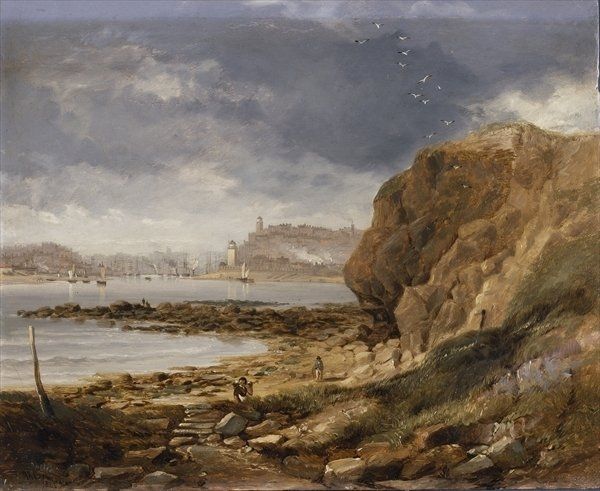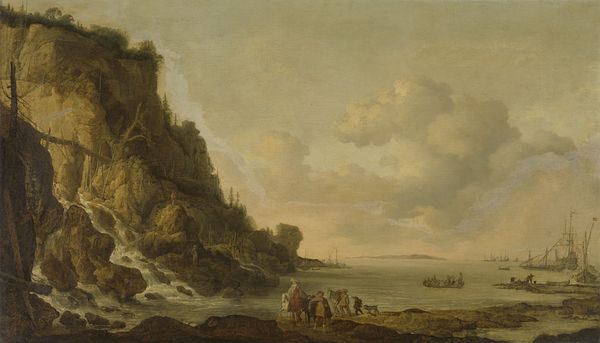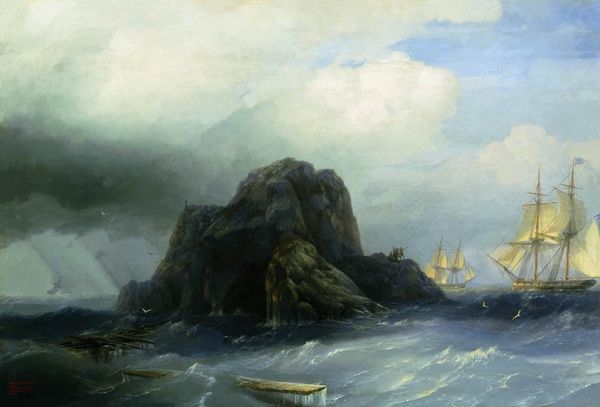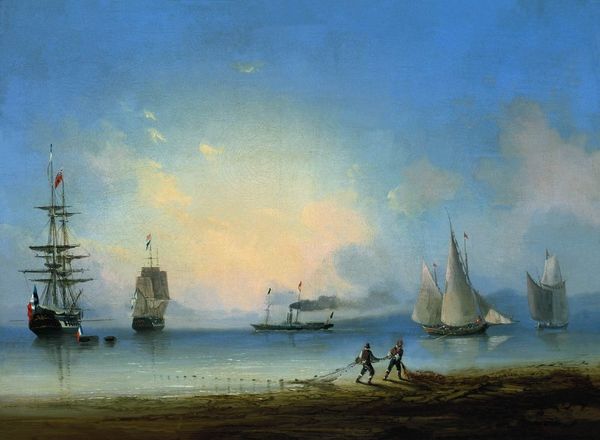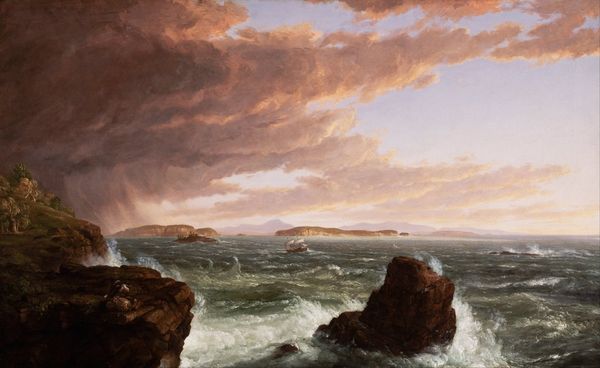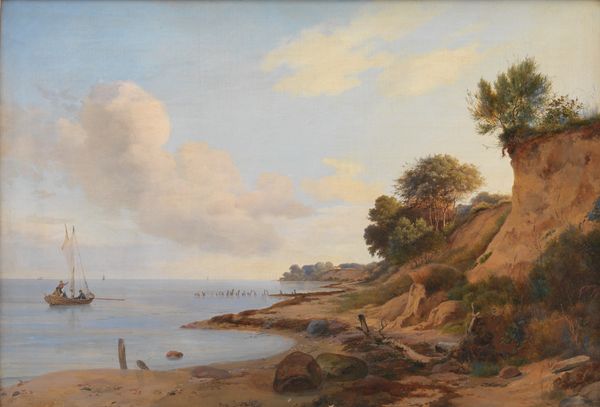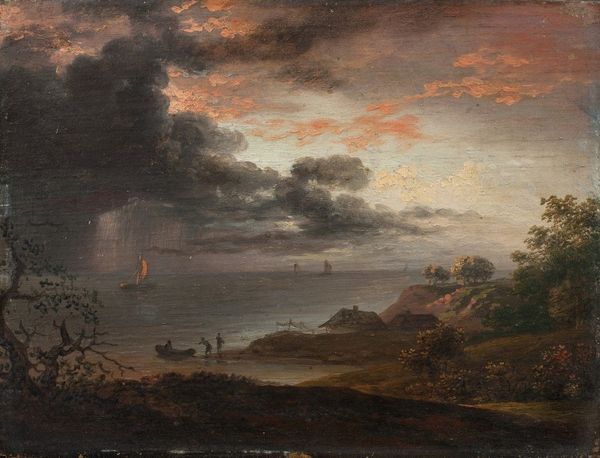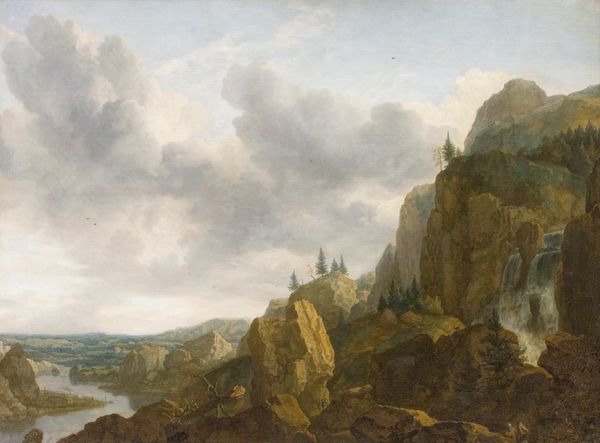
plein-air, oil-paint
#
sky
#
plein-air
#
oil-paint
#
landscape
#
oil painting
#
romanticism
#
charcoal
#
realism
#
sea
Copyright: Public domain
Curator: John Wilson Carmichael's oil painting, St. Mary's Island from Whitley Rocks, completed in 1845, offers a glimpse into the coastal landscape of Northeast England. Editor: It evokes such a melancholic stillness. The muted palette, dominated by greys and browns, and that overcast sky lend it a rather somber quality. The composition feels deliberate, almost theatrical. Curator: Carmichael was quite prolific in painting seascapes. What's interesting is his attention to depicting the rising presence of industrialization alongside these natural vistas. Notice the steamship. It hints at the changes impacting the coastline and the lives of people living there. Editor: The juxtaposition is certainly striking. The rugged, almost primordial rocks in the foreground are rendered with impressive detail. The rough textures and subtle color variations invite the eye to explore every crevice. How the artist makes use of diagonal lines to create depth, with the gaze being drawn to the distant shoreline, it's brilliant. Curator: The inclusion of the small figures in the painting provides scale but also social context. We get a sense of human engagement with the landscape, likely people involved in fishing or other coastal trades that depend on natural resources. Editor: True, but what is fascinating is the tension he has captured with that romantic style and that industrial intrusion represented by the steamship, the sky and the composition suggests an impending change, a disruption of the natural order. The dark, heavy sky mirrors the dark smoke of the vessel. Curator: And one cannot overlook the practical aspects. Carmichael embraced plein-air painting and thus had a direct relationship to the subject. He directly engages the viewer through an honest record of place and atmosphere. The conditions in which he made the work add layers of meaning to his portrayal. Editor: I see your point. It all connects; The brushstrokes, the muted hues, and the industrial activity tell a multifaceted story about place and transformation, the beauty in the landscape and human presence in it. Curator: Indeed. This artwork reminds us of how historical landscapes are not just aesthetic representations of nature but records of industry, labor, and societal change. Editor: It encourages one to reflect on how these coastal landscapes have been, and continue to be, shaped by economic forces. Thanks to this materialist lens, my formalist appreciation goes even further.
Comments
No comments
Be the first to comment and join the conversation on the ultimate creative platform.
